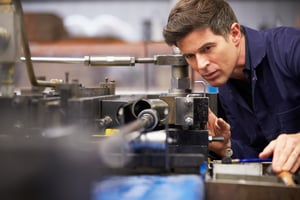 The R&D Tax Credit has changed significantly since it was first established in 1981, but the intent has remained consistent: encourage and reward innovation by companies that develop or improve products or processes. Many types of businesses and activities qualify for this dollar-for-dollar tax credit, as long as they pass the law's Four-Part Test:
The R&D Tax Credit has changed significantly since it was first established in 1981, but the intent has remained consistent: encourage and reward innovation by companies that develop or improve products or processes. Many types of businesses and activities qualify for this dollar-for-dollar tax credit, as long as they pass the law's Four-Part Test:
Each element of the test has its own requirements, but in this article, we will focus on “Process of Experimentation,“ which covers activities of experimentation designed to eliminate or resolve technical uncertainty.
During the manufacturing process, various alternatives and approaches are evaluated by modeling, simulation, trial and error, prototyping and other methods. These are the types of activities that might qualify under "Process of Experimentation."
But what does that "Process of Experimentation" actually look like in the real world? For some examples, let’s look at common issues faced by a typical contract manufacturer.
Examples of "Process of Experimentation"
Like many, our contract manufacturer is required to provide year over year cost reductions on the products produced. Over time, it becomes more difficult to meet the customer's financial demands with extended payment terms and increasing labor and material costs, especially on a mature product. Our manufacturer must maintain a minimum profit margin to stay in business, but if they do not reduce the price, they are at risk of losing a customer.
This is when the contract manufacturers must get creative in the manufacturing of the product and evaluate alternatives to produce the product. Fortunately, these examples of ways to reduce time and cost and improve the strength of a part could all be considered "Process of Experimentation."
- Purchasing new equipment or experimenting with new tooling that could increase the number of parts produced per hour.
- Modeling the design in the CAD system to reduce the number of parts needed in the construction of an assembly.
- Redesigning what once was a welded corner in a sheet metal assembly into a formed corner to eliminate welding costs.
- Designing ribs into the sides or base of the product to strengthen the integrity and reduce the need to weld structural supports.
- Adding ribs to allow for the reduction of material thickness.
All good cost reduction ideas in the concept stage must be proven through the process of experimentation. Each idea would continue to be evaluated through the prototyping and testing stage to verify the integrity of the product and ensure the original design objectives are not compromised. Based on the findings, additional design, engineering, prototyping, and testing may be required until the goals are met.
Claiming the Credit
Remember, "Process of Experimentation" is just one element of the Four-Part Test, so it's important to consult an R&D Tax Credit professional with an understanding of your industry to ensure your company's activities qualify for the R&D Tax Credit.





